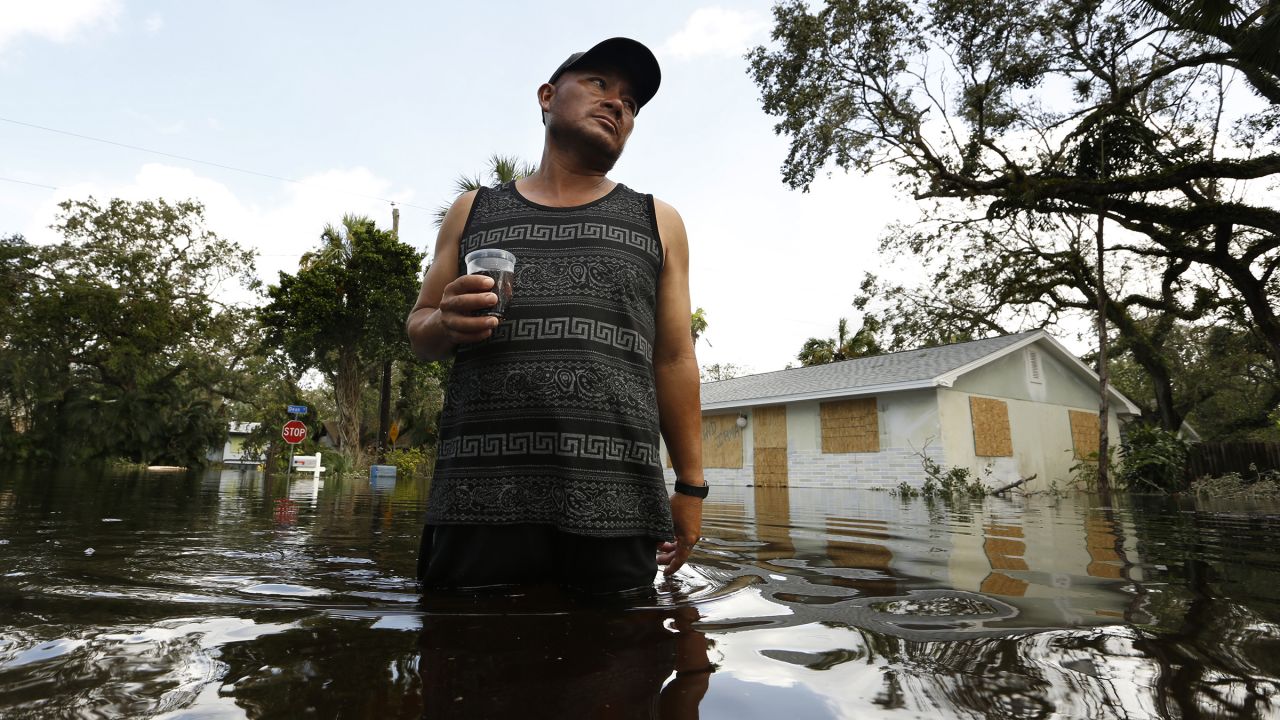
Gilberto Diaz, 42, stands in 4 feet of water in his neighborhood of Bonita Springs, Florida. Originally from Guatemala, he has lived in Florida since 1994. (Photo by Carolyn Cole/Los Angeles Times via Getty Images)
At the end of August, nearly 400 employees left the EPA. Staffing levels are approaching their lowest point since the Reagan administration, The Wall Street Journal reports.
At the beginning of the summer, the agency offered a buyout plan to 1,200 staffers, and roughly a third took the agency up on the offer. More staffers are expected to retire or take buyouts this month, putting the Trump administration well on its way to slashing 3,200 jobs from the agency, the goal outlined in the president’s budget.
As employees head for the exit, some people have questions about whether the agency will still be able to adequately regulate, Timothy Puko reports for The Journal:
Mr. Pruitt hasn’t laid out any plan for how to reshape the agency or its priorities, making it more difficult to improve its performance with fewer resources, said Jeff Ruch, executive director at Public Employees for Environmental Responsibility, which represents government employees in environmental fields. It wasn’t immediately clear how the departures broke down among different departments within the EPA.
The departures come as two record-breaking hurricanes threaten to produce a host of new environmental disasters. Hurricane Harvey decimated Houston’s petrochemical industry, which includes 230 toxic plants and 30 refineries, according to the Sierra Club. Billions of gallons of of oil and chemicals are stored nearby. In the days after the storm, one chemical plant burst into flames, potentially spreading toxins into the air and water — though, after testing samples, the EPA said it didn’t find anything to worry about.
Harvey also caused Superfund sites to flood and, in some cases, spill into neighbors’ homes. (When the Associated Press reported that seven Superfund sites were flooded, the EPA’s press office put out a release that attacked the reporter and linked to a Breitbart article that described the wire service, which appears in newspapers nationwide, as “fake news.”)
In addition to the on-the-ground environmental disasters, there’s the fact of the hurricanes themselves, and of the future dangerous storms that will inevitably come. While the storms weren’t “caused” by climate change, elements of it made them worse — notably, as climate scientist Michael Mann explains, warmer waters in the Gulf of Mexico hoisted more moisture into the atmosphere. That, in turn, meant more rain and flooding for people in Texas and Florida — so much rain, in fact, that the Earth’s crust below Houston bent beneath the weight of the 33 trillion gallons the storm dropped.
As climate change ambles forward, bringing increasingly bizarre weather events, there will be much to study and much to respond to. But the EPA won’t be taking part in it. In addition to the buyouts, a former Trump campaign aide has been tasked with policing EPA grant applications. He will be on the lookout, The Washington Post’s Juliet Eilperin reports, for “the double C-word” — climate change. As local governments and nonprofit groups seek to help their communities adapt to climate change, they’ll have to avoid mentioning the subject when seeking funding from the EPA.
As for the lower staffing levels — an EPA spokesperson told The Wall Street Journal that the buyouts would not leave the agency with too few people to respond to a natural disaster. Unfortunately, we’ll soon find out if that assertion is correct.
Read more installments in our series “While He was Tweeting” — keeping an eye on Trump’s wrecking ball.




